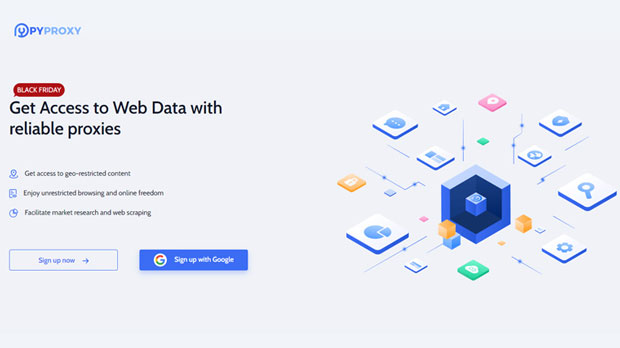How to solve network limitation problem on Windows system with Socks5 proxy server?
In the age of digital communication, network restrictions imposed by firewalls, government regulations, or organizational policies can often limit access to essential online resources. For Windows users facing such limitations, a socks5 proxy server can serve as an efficient solution. Socks5, a versatile protocol that routes internet traffic through a proxy server, enables users to bypass geographic restrictions, avoid censorship, and maintain a level of anonymity. This article explores how to leverage socks5 proxies in Windows environments to overcome network barriers effectively, offering both a technical guide and practical solutions for users seeking smoother internet access. By understanding the role of Socks5 proxies, configuring them correctly, and exploring their benefits, users can regain control over their online experience. Understanding socks5 proxy servers and Their Role in Network RestrictionsA Socks5 proxy server is a versatile tool that acts as an intermediary between a user’s device and the internet. Unlike traditional HTTP proxies, which only handle web traffic, Socks5 can route any kind of internet traffic, whether it's for web browsing, file transfers, or even peer-to-peer communications. This ability to handle a wide range of traffic makes it particularly useful for overcoming network restrictions imposed on specific types of internet usage. One of the key advantages of using a Socks5 proxy is that it does not alter the traffic in any way, providing users with greater privacy and anonymity. The proxy simply forwards requests to the destination server, which then returns the response to the user, making it much harder for third parties to track the user’s activity or location. This feature makes Socks5 proxies especially useful for bypassing geographic or governmental restrictions on online content, such as access to streaming services, social media platforms, or websites that are blocked in certain regions.How Socks5 Proxy Helps Overcome Windows Network LimitationsWindows systems can face a variety of network restrictions due to firewalls, access control lists (ACLs), or network policies that limit the user’s ability to access certain sites or online services. For instance, a user might encounter access restrictions while trying to connect to streaming platforms, websites with geo-blocked content, or external services in countries with heavy internet censorship. By configuring a Socks5 proxy, users can route their traffic through an intermediary server located in a different region or country, bypassing local network restrictions.Here are some of the common ways a Socks5 proxy helps overcome network limitations:1. Bypassing Geographic Restrictions: Many websites and services are region-locked, meaning they are only accessible from specific countries or regions. For instance, some video streaming platforms restrict content based on the user’s location. A Socks5 proxy can be configured to route internet traffic through a server located in a different country, allowing users to access content as if they were physically located there.2. Circumventing Censorship and Firewalls: In some countries, the internet is heavily censored, and many websites are blocked, including social media platforms and news outlets. By using a Socks5 proxy, users can route their traffic through servers in regions with fewer restrictions, allowing them to access uncensored content and freely browse the internet.3. Enhancing Privacy and Anonymity: In addition to bypassing network restrictions, a Socks5 proxy can enhance online privacy. When using a Socks5 proxy, the user’s IP address is masked, and all internet traffic appears to come from the proxy server’s location. This makes it harder for websites and third-party organizations to track the user’s real location or browsing activity.4. Improving Network Speed and Reliability: In certain cases, using a Socks5 proxy can also improve the speed and reliability of internet connections. For example, if a user is on a network with limited bandwidth or high latency, a proxy server located in a better-connected region can help improve the performance by routing traffic through faster, less congested paths.Configuring a Socks5 Proxy Server on WindowsSetting up a Socks5 proxy server on a Windows system requires a few steps. Below is a simplified guide to help users configure and connect to a Socks5 proxy:1. Obtain Socks5 Proxy Details: The first step is to acquire the necessary Socks5 proxy details, including the server address (IP address or domain) and the port number. These details are typically provided by the service provider or administrator of the proxy server.2. Open Network Settings on Windows: In Windows 10 or 11, go to the "Settings" menu, then select "Network & Internet." From the left-hand menu, click on "Proxy."3. Enable Proxy Settings: In the proxy settings menu, you will find an option to configure manual proxy settings. Turn on the “Use a proxy server” option, then enter the Socks5 server address and port number in the corresponding fields.4. Configure Authentication (if required): If the Socks5 proxy requires authentication, make sure to input your username and password in the appropriate fields. 5. Test the Connection: After saving the settings, it’s essential to test the proxy connection by accessing a website or online service that was previously restricted. If the connection is successful, the Socks5 proxy is working as intended.Benefits and Limitations of Using a Socks5 ProxyWhile using a Socks5 proxy to bypass network restrictions can be highly effective, it’s important to understand both the advantages and potential limitations of this solution.Benefits:- Versatility: Socks5 proxies can handle a wide range of traffic types, from web browsing to file-sharing and gaming.- Bypass Restrictions: Whether it’s geographical restrictions, censorship, or access control lists, a Socks5 proxy can help users access blocked content and services.- Enhanced Privacy: By masking the user’s IP address, Socks5 proxies provide an added layer of anonymity, making it harder for third parties to track user activity.Limitations:- Speed and Latency: Routing traffic through a proxy server can introduce additional latency and reduce connection speed, particularly if the proxy server is located far from the user or is heavily loaded.- Security Concerns: While Socks5 proxies provide anonymity, they do not encrypt traffic, meaning data is transmitted in plaintext. For more secure browsing, users may prefer using a Virtual Private Network (VPN) that provides encryption.- Reliability: Not all Socks5 proxies are reliable, and free proxies, in particular, may be slow, unreliable, or prone to failure.ConclusionSocks5 proxy servers offer a powerful and flexible solution for Windows users facing network restrictions. By configuring a Socks5 proxy server, users can bypass geographic restrictions, access blocked content, enhance their privacy, and even improve network performance. However, it’s important to carefully choose a reliable proxy provider and understand the limitations of the technology. By following the configuration steps outlined in this article, users can effectively utilize Socks5 proxies to regain control over their online experience and bypass the restrictions that often hinder their ability to access the open internet. With proper setup and thoughtful use, a Socks5 proxy server can be an invaluable tool for overcoming network limitations in a variety of scenarios.
2024-12-30
























































